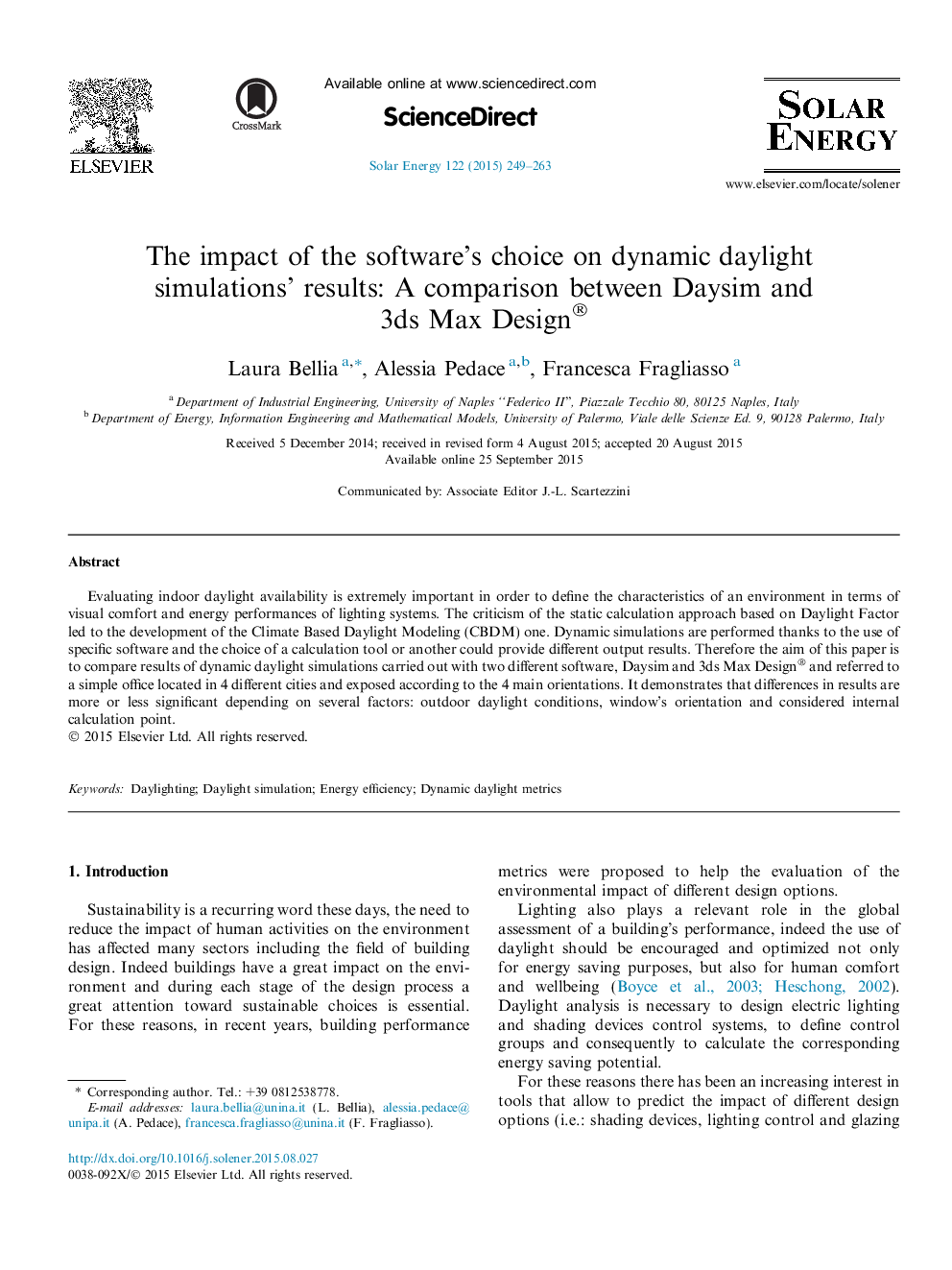| Article ID | Journal | Published Year | Pages | File Type |
|---|---|---|---|---|
| 1549579 | Solar Energy | 2015 | 15 Pages |
•Daylight simulations results are quite similar with Daysim and 3ds Max Design.•Different simulation results may lead to a different prevision of energy saving.•Differences between the software depend on the sensor’s position.
Evaluating indoor daylight availability is extremely important in order to define the characteristics of an environment in terms of visual comfort and energy performances of lighting systems. The criticism of the static calculation approach based on Daylight Factor led to the development of the Climate Based Daylight Modeling (CBDM) one. Dynamic simulations are performed thanks to the use of specific software and the choice of a calculation tool or another could provide different output results. Therefore the aim of this paper is to compare results of dynamic daylight simulations carried out with two different software, Daysim and 3ds Max Design® and referred to a simple office located in 4 different cities and exposed according to the 4 main orientations. It demonstrates that differences in results are more or less significant depending on several factors: outdoor daylight conditions, window’s orientation and considered internal calculation point.
